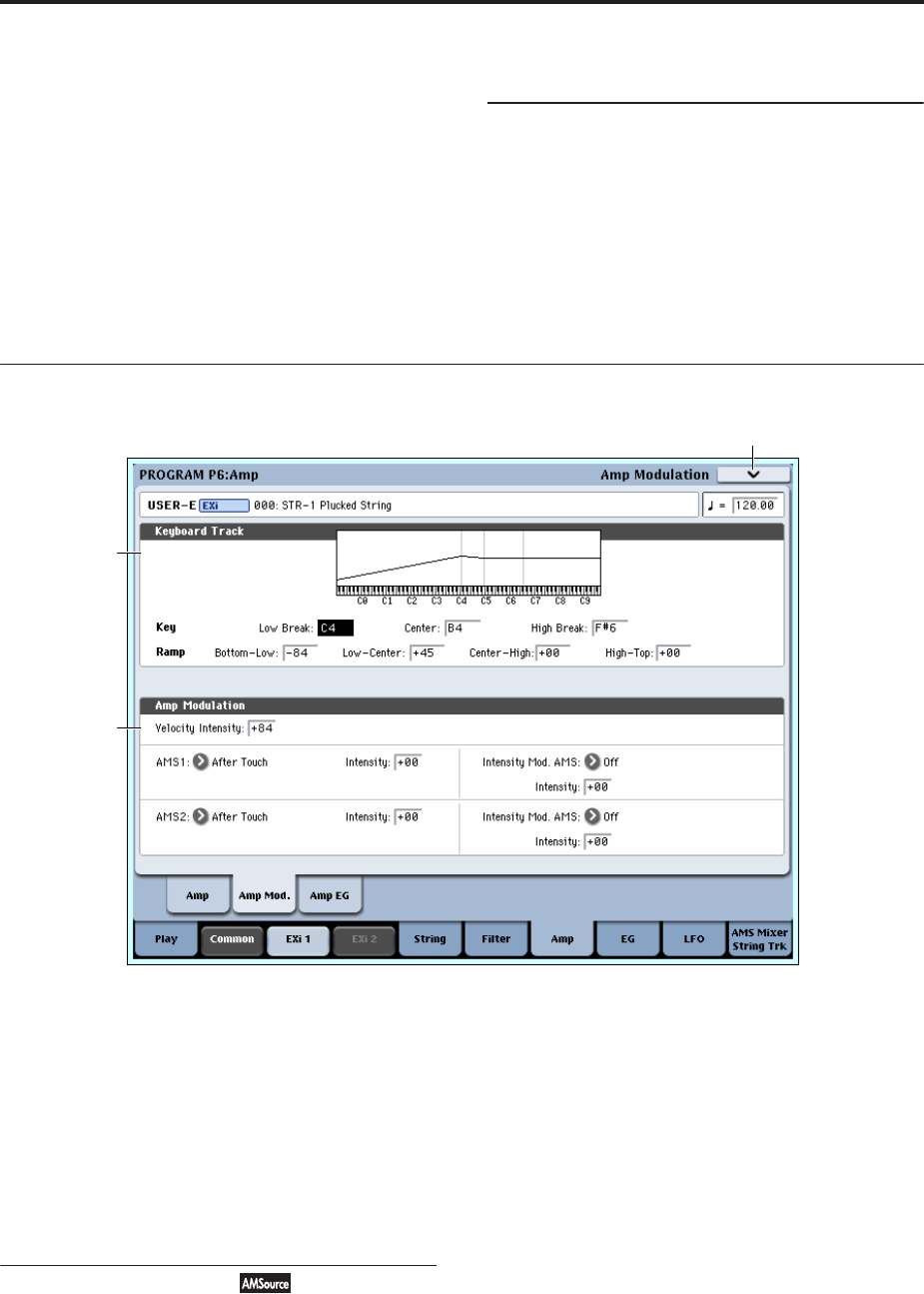
EXi: STR-1 Plucked String
270
AMS [AMS Sources]
This selects an AMS source to modulate Pan. For a list
of AMS sources, see “AMS (Alternate Modulation
Source) List” on page 967.
Intensity [–99…+99]
This controls the depth and direction of the AMS
modulation for Pan.
For example, if Pan is set to C064 and AMS is set to
Note Number, positive (+) intensities will cause the
sound to move toward the right as you play higher
than C4, and toward the left as you play lower than C4.
Negative (–) intensities will have the opposite effect.
▼ 6–1: Page Menu Commands
The number before each command shows its ENTER +
number-key shortcut. For more information on these
shortcuts, see “ENTER + 0-9: shortcuts for menu
commands” on page 138.
• 0: Write Program. For more information, see “Write
Program” on page 138.
• 1: Exclusive Solo. For more information, see
“Exclusive Solo” on page 138.
6-2: Amp Modulation
This page contains the settings for the STR-1’s Amp
level modulation. Among other things, you can:
• Set up complex keyboard tracking shapes to control
the Amp level.
• Assign AMS modulation for the Amp level.
• Control the effect of the LFOs on the Amp level.
The total effects of the modulation can increase the
volume to a maximum of two times louder than the
Amp Level setting.
6–2a: Keyboard Track
Keyboard tracking lets you vary the volume as you
play up and down the keyboard. Usually, some
amount of key tracking is necessary in order to make
the volume consistent across the entire range.
The STR-1’s Amp keyboard tracking parameters are
identical to the HD-1’s. For more detailed explanations
of the parameters, please see “4–2a: Keyboard Track,”
on page 75.
There is one difference between the two, however: the
STR-1’s Amp tracking is affected by Portamento, so
that it changes smoothly during glides.
Key
Low Break [C–1…G9]
This sets the breakpoint note between the two lower
ramps.
Center [C–1…G9]
This sets the center of the keyboard tracking. At this
key, the keyboard tracking has no effect on the volume,
or on any AMS destinations.
High Break [C–1…G9]
This sets the breakpoint note between the two higher
ramps.
6–2PMC
6–2a
6–2b


















